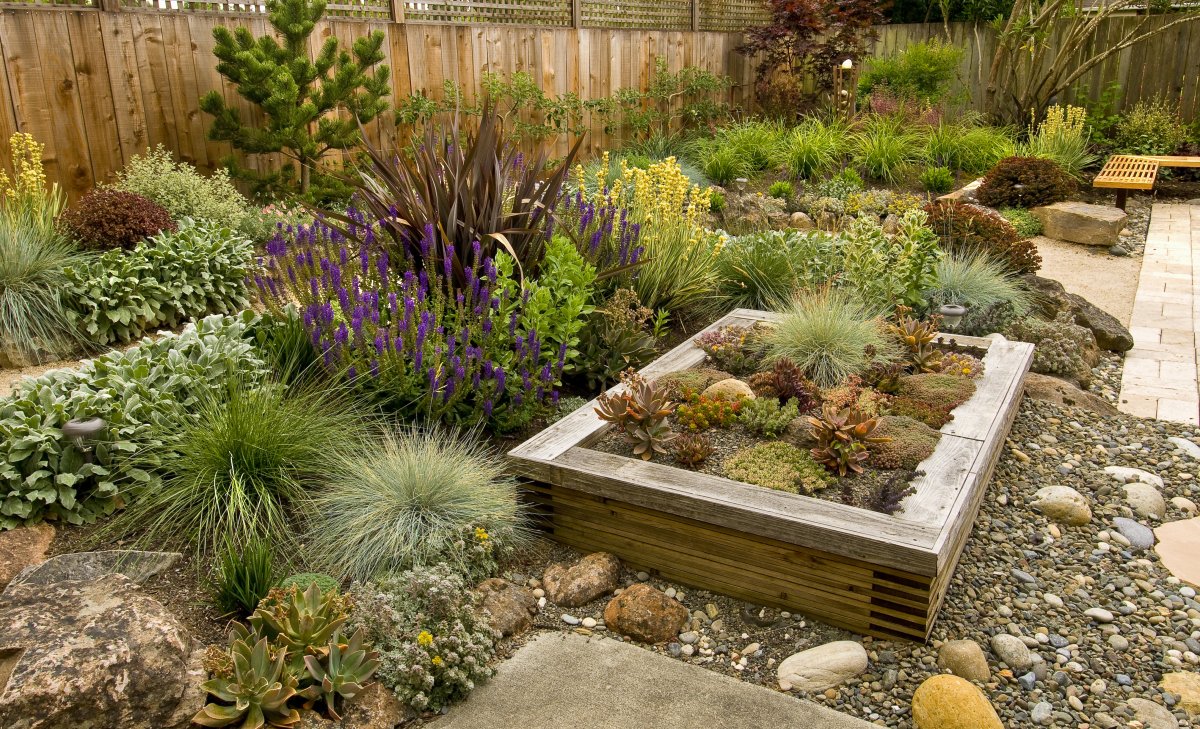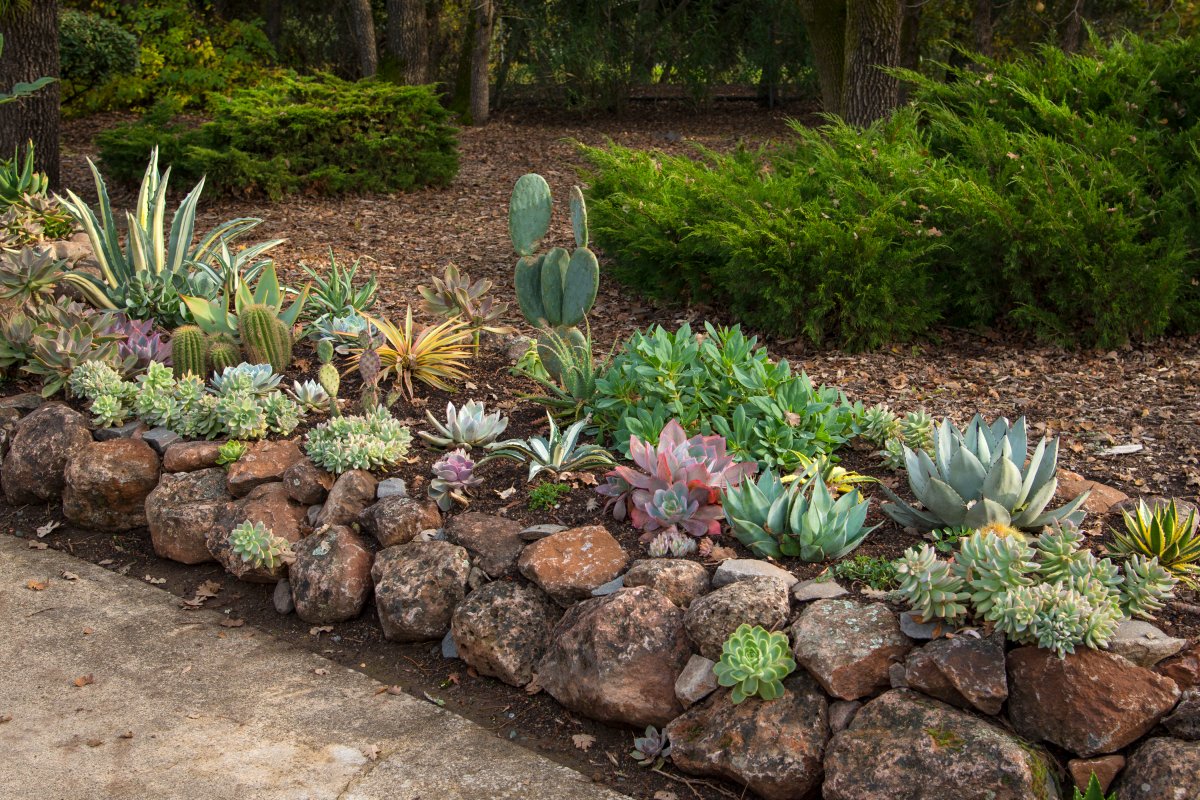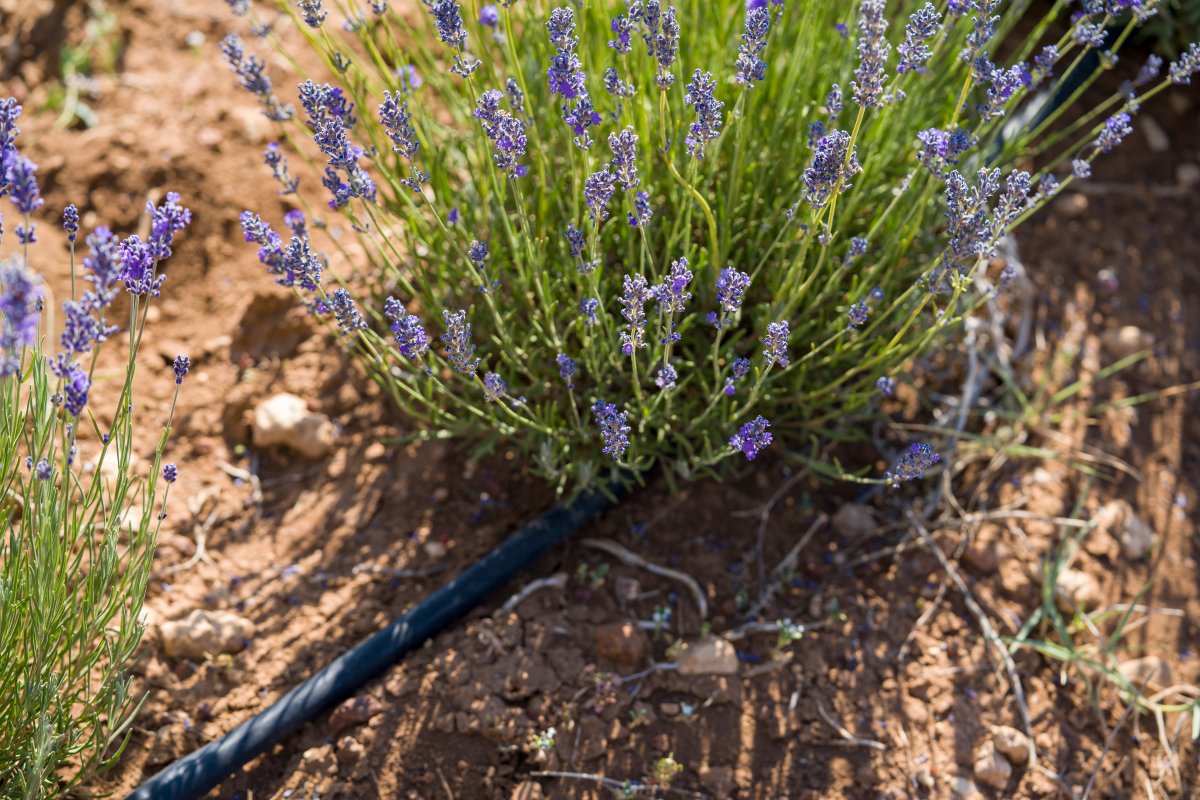

We may earn revenue from the products available on this page and participate in affiliate programs. Learn More ›
Are you frustrated by a yard with uneven terrain; scattered stones; and dry, shallow soil? While many people don’t realize it, rocky terrain comes with its own kind of beauty, says Loren Taylor, owner of Soothing Company in Utah. “What I’ve come to learn after years of landscaping in all kinds of conditions is that rocky yards don’t need to be ‘fixed’; they need to be understood,” says Taylor. “Once you shift your mindset from trying to hide the rocks to working with them, the possibilities start to unfold.”
Whether it’s creating terraces and raised beds or planting succulents and ornamental grasses in a garden that incorporates xeriscaping techniques, there are many ways to design landscaping for a rocky yard. It’s less about changing the space and more about revealing it. “With the right approach, what first felt like a challenge becomes a kind of dialogue—between stone and soil, plant and person. It’s in those conversations, quiet and patient, that the most lasting designs come to life,” notes Taylor.
Learn more about how to landscape a rocky yard with these expert-backed tips.

1. Embrace the rocks.
Forget the pressure to have the perfect plush turfgrass yard without rocks. “Instead of trying to remove all the rocks, use them as a natural element in your design,” says Andre Paquette, CEO of Firefly Farm and Mercantile in Cashton, Wisconsin. “Large rocks can be used for focal points or to create a rugged, natural look, while smaller rocks can be used for paths or as ground cover.” Create a rock garden using a variety of attractive landscaping stones to add color, texture, and structure to the yard. Choose from pea gravel, river rock, and crushed stone, in addition to a few large boulders.
2. Choose plants that thrive in a rocky environment.
Instead of forcing a lush lawn where it doesn’t belong, look for vegetation that thrives in your conditions, such as drought-tolerant ground cover plants and native plants that require minimal maintenance. “You start to see that it’s not about perfection—it’s about finding balance,” says Taylor. “Succulents that store water are like little treasures. Ornamental grasses that sway even when there’s barely a breeze are great, as are herbs like lavender that fill the air with scent and survive with little fuss.” Other recommendations include sedum, creeping thyme, black-eyed Susans, catmint, baby’s breath, coneflower, dogwood, geranium, juniper, magnolia, milkweed, and smoke bush.
3. Install drip irrigation.
Drip irrigation is essential for turning challenging terrain like a high-altitude landscape into a healthy, beautiful landscape and getting water where it needs to go, says Taylor. Rocky yards often have shallow soil, uneven ground, and areas where water runs off too quickly. “Regular sprinkler systems don’t work well in these conditions,” explains Taylor. “They spray water over a wide area, which often wastes water and misses the spots where plants really need it.” In rocky yards, much of that water ends up running off stones or soaking into the wrong places.
On the other hand, drip irrigation works much better, especially in dry areas and xeriscaped gardens. “It’s a low-pressure system that sends water slowly and directly to the base of each plant, which helps the water soak deep into the soil right where the plant roots need it most,” says Taylor. “It also prevents water waste, avoids watering weeds, and keeps your garden looking clean since the lines can be hidden under mulch or stones.”

4. Amend the soil.
Amending soil gives plants the conditions they need to thrive, which might be necessary if you have a rocky yard. Rocky soil usually lacks the nutrients and structure that plants need to grow well, but that doesn’t mean you need to dig up the whole yard, says Taylor. It’s better to focus on small planting areas, which he likes to call “boost zones.” Taylor says: “Add compost, aged mulch, or other organic material into the spots where you’ll put your plants to help make the soil richer and be able to hold more water to give your plants a much better start.” Over time, as plant roots grow and the soil improves naturally, the entire area becomes healthier and more stable.
5. Incorporate raised beds or terraces into the design.
An alternative to amending the soil when you landscape a rocky yard is to add some raised beds or containers. This way, you have control over the soil composition based on the vegetation you choose. “If your yard has uneven terrain, consider building terraces or raised beds to make planting easier and to create visually interesting levels,” suggests Andre Paquette. “This can also help prevent erosion and improve soil quality in specific spots.” It is recommended that you design raised beds to be at least 6 inches deep.
